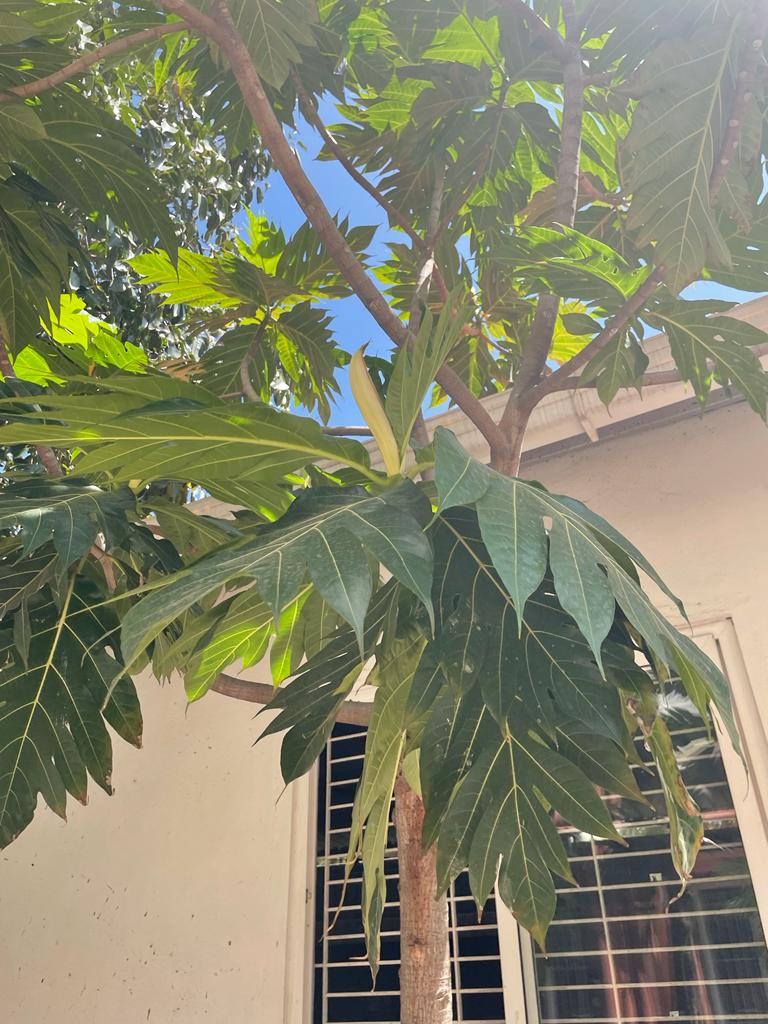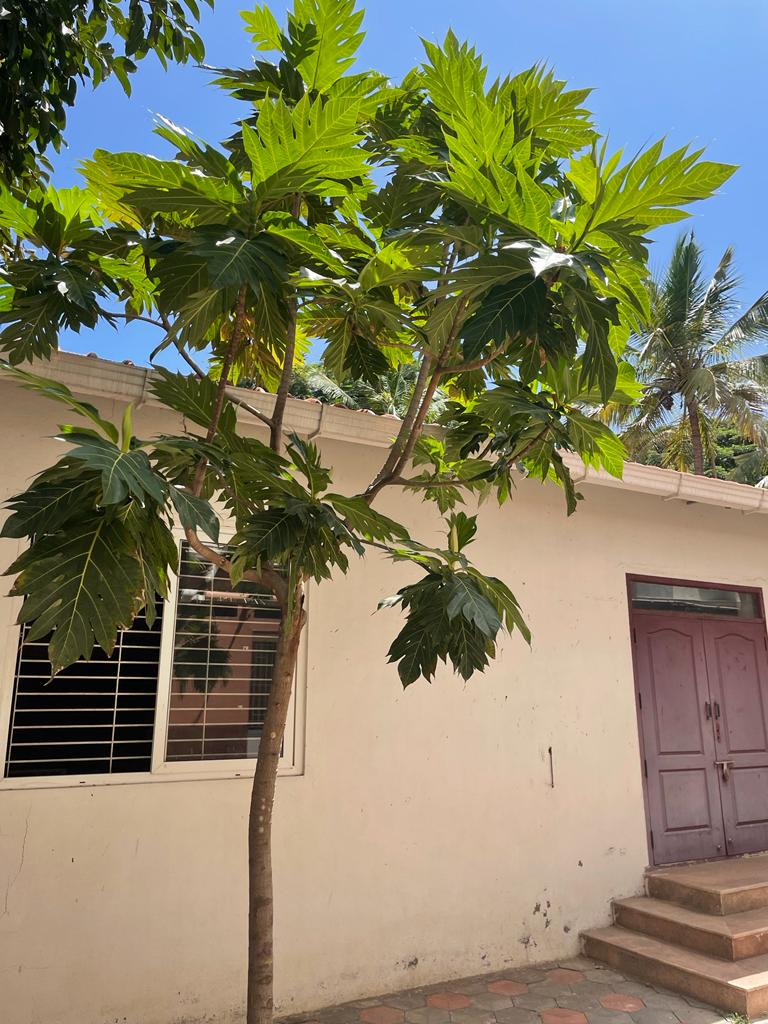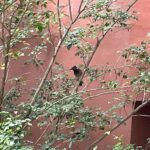“Hey! Look at those tiny jackfruits!”
“No, they are not jackfruits. They are breadfruits.”
“Are you sure? They definitely look like jackfruits.”
“Yes, I am!”
Having heard this conversation for the thousandth time, I have finally decided to demystify a tree that has puzzled all K’sirians.
Artocarpus altilis, also known as breadfruit, கரிப்பலா (Karipalaa), or சீமைப்பலா (Seemaipalaa), is a tropical or subtropical evergreen tree belonging to the mulberry family that can grow up to 40 metres tall. The tree features large, thick leaves with 5–11 pinnate lobes, and all parts of the tree produce latex.
Native to the tropical regions of the Pacific Islands, Caribbean, and Southeast Asia, breadfruit is a monoecious tree with both male and female flowers growing on the same tree on small stems arising from the trunk or large branches. Male flowers are small and not easily visible, while female flowers are larger and have a fleshy, spiky exterior.

The male flowers are small and not clearly visible, while the female flowers are larger and have a fleshy, spiky exterior. The female flowers, which are arranged in capitulum form, are made up of 1500–2000 minute flowerlets attached to a spongy core. After being pollinated by fruit bats, the female flowers grow into a compound, false fruit that resembles a jackfruit.
This fruit, known as the breadfruit, can weigh up to five kilograms. It has a large, round, and prickly exterior. Its interior is creamy white, and its texture is similar to that of bread or potatoes when cooked.
Breadfruit is highly nutritious, containing significant amounts of dietary fibre, protein, essential amino acids, vitamin C, B1, B5, and minerals. The fruit can be harvested when it is still green and unripe or after it has ripened and turned yellow. It can then be cooked in a variety of ways, including roasting, boiling, frying, or baking.
It can also be used in both sweet and savoury dishes, making it a versatile ingredient in the kitchen. It can also be processed into various products such as chips, flour, or even alcohol. The leaves of the breadfruit tree are also edible and can be used in cooking as a wrap for food or boiled and eaten as a vegetable.
Breadfruit chips are so delicious that jackfruit chips will fall flat in front of them.
Breadfruit holds a prominent place in the diets of Pacific Islanders, where it is considered a staple food and frequently served as a side dish or used as a substitute for rice. Additionally, it also carries cultural importance in these communities, featuring in traditional ceremonies and celebrations as a symbol of prosperity and abundance.
Breadfruit has medicinal properties in addition to its culinary uses. It is high in antioxidants, which can protect the body from cell damage and reduce the risk of chronic diseases like cancer and heart problems. Furthermore, it has been traditionally used to treat diabetes due to its low glycemic index.
The leaves and bark of the breadfruit tree have compounds that exhibit antimicrobial and anti-inflammatory effects, making them useful in treating skin conditions like eczema and psoriasis. Moreover, the latex derived from the breadfruit tree is used in traditional medicine to alleviate coughs, asthma, and rheumatism.
Beyond that, breadfruit has been used in traditional medicine to aid digestion, improve brain function, enhance reproductive health, manage weight, regulate blood pressure, increase bone mass, and boost immunity.
Breadfruit is also considered an environmentally friendly crop. It is a fast-growing and high-yielding tree that requires minimal fertilisers or pesticides, making it a sustainable alternative to other crops that require more resources.
It is renowned for its robustness and ability to flourish in diverse soil and climate conditions. It demands minimal upkeep and has the capacity to yield as many as 200 fruits annually. As a result, it is a crucial crop for sustaining both food security and livelihoods in several small island nations. Because it can withstand natural disasters like droughts and hurricanes, it is a vital food source during times of emergency.
Despite its many benefits, breadfruit remains relatively unknown outside of its native regions. However, with the increasing interest in sustainable and resilient food systems, breadfruit has the potential to become a more widely recognised and utilised crop.
Exploring Breadfruit’s Taxonomy:
Kingdom: Plantae
Phylum: Tracheophyta
Sub-phylum: Spermatophyta, Angiospermae
Class: Eudicotidae
Superorder: Rosanae
Order: Rosales
Family: Moraceae (Mulberry Family)
Genus: Artocarpus
Species: Artocarpus altilis








